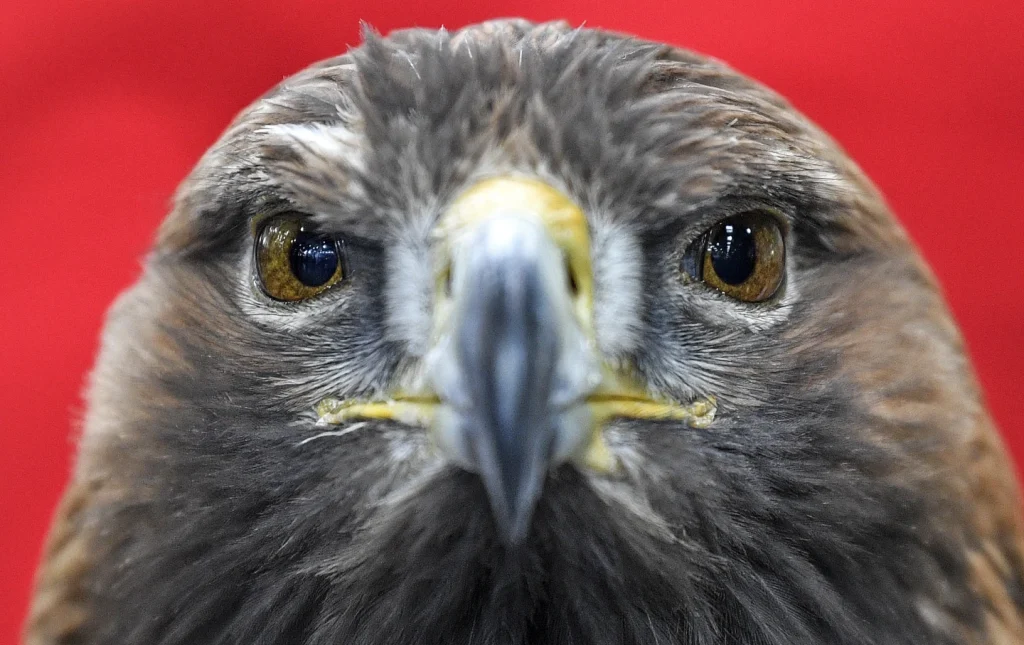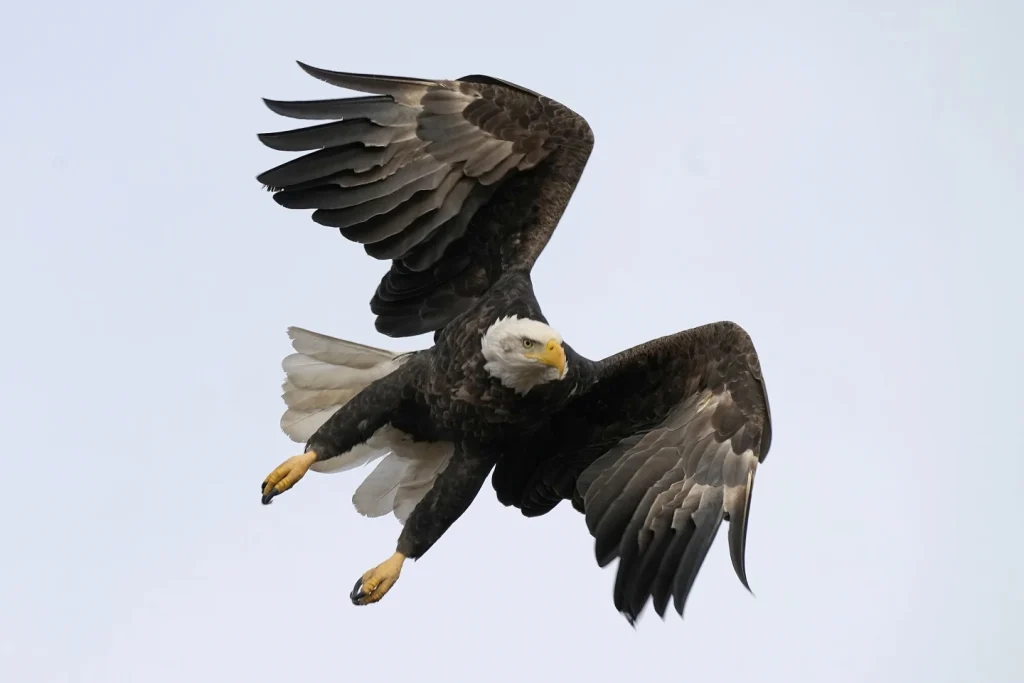The recent issuance of an arrest warrant for a Montana man who failed to appear in court for charges related to the killing of thousands of birds, including bald and golden eagles, has brought attention to the pressing issue of wildlife conservation and the illegal trade of eagle parts.
This case, which involves the killing of approximately 3,600 birds over a six-year period and the subsequent sale of eagle parts on the black market, underscores the urgent need for stricter enforcement of wildlife protection laws and the preservation of endangered species.
The grand jury indictment, unsealed last month, revealed the extent of the illegal activities carried out by the defendants, who operated on Montana’s Flathead Indian Reservation and other locations.
The wanton destruction of thousands of birds, including iconic and protected species such as bald and golden eagles, is a grave violation of environmental and wildlife protection laws.
The fact that the defendants were also involved in the illicit trade of eagle parts further exacerbates the severity of their actions, as it perpetuates a black market that poses a significant threat to the conservation of these majestic birds.
The issuance of an arrest warrant for Simon Paul, who failed to appear for his scheduled arraignment, reflects the seriousness of the charges against him.
Meanwhile, the plea of not guilty entered by Travis John Branson, the second defendant in the case, indicates that this legal battle is far from over.
The proceedings in this case are likely to shed light on the extent of the illegal wildlife trade and the detrimental impact it has on the preservation of endangered species.
The killing of thousands of birds and the illegal trade of their parts is not only a violation of federal laws but also a moral transgression against the natural world.
Bald and golden eagles, with their symbolic significance and ecological importance, hold a special place in the American landscape.
The senseless killing of these birds for profit is an affront to the principles of environmental stewardship and ethical treatment of wildlife.
Furthermore, the case underscores the need for greater vigilance and enforcement measures to combat the illegal trade of wildlife and the exploitation of endangered species.
The black market for eagle parts, which has persisted as a long-standing problem for U.S. wildlife officials, requires concerted efforts to dismantle and prevent further harm to these vulnerable populations.
In conclusion, the issuance of an arrest warrant for one defendant and the plea of not guilty by another in the case of the illegal killing and trading of thousands of birds, including bald and golden eagles, highlights the urgency of addressing the illegal wildlife trade and strengthening conservation efforts.
This case serves as a stark reminder of the critical need to protect and preserve our natural heritage, and it calls for swift and decisive action to hold accountable those who engage in the unlawful exploitation of wildlife.
Only through a unified commitment to upholding wildlife protection laws and combating the illegal trade of endangered species can we ensure the continued existence of these magnificent creatures for future generations.
The preservation of our natural world and the protection of its inhabitants, including iconic species like the bald and golden eagles, must be a priority for all individuals and authorities.
It is incumbent upon us to uphold the laws that safeguard our wildlife and to work tirelessly to prevent the illegal trade and exploitation of endangered species.
Only through collective efforts and unwavering dedication can we hope to secure a future where these majestic birds and other vulnerable species thrive in their natural habitats, free from the threat of exploitation and harm.
The case of the two defendants charged with unlawful trafficking of bald and golden eagles, along with conspiracy and violating wildlife trafficking laws, raises significant concerns about the protection of these iconic and endangered species.
The allegations against Paul and Branson, along with their unnamed associates, paint a disturbing picture of illegal hunting and exploitation of these majestic birds for profit.
According to prosecutors, the defendants were involved in the hunting and killing of eagles, using unethical methods such as using a dead deer to lure an eagle for the purpose of shooting it.
Subsequently, they allegedly conspired to sell various parts of the eagles for substantial financial gain.
These actions not only demonstrate a blatant disregard for the laws protecting wildlife but also reflect a callous indifference to the conservation of these vulnerable species.
The potential consequences for the defendants are severe, with each facing up to five years in federal prison for the conspiracy and wildlife trafficking violations.
Furthermore, trafficking eagles carries its own significant penalties, with up to one year in prison for a first offense and two years for subsequent offenses.
These penalties underscore the gravity of the offenses and the importance of enforcing laws designed to safeguard endangered wildlife.
The absence of comments from Branson and Paul, along with the lack of immediate response from their court-appointed attorney, adds an air of mystery and raises questions about their potential defense strategies.
It remains to be seen how they will respond to the allegations and what legal arguments they may present in their defense.
This case also highlights the broader issue of wildlife trafficking and the urgent need for robust enforcement of laws aimed at protecting endangered species.
The illegal trade in wildlife, including birds of prey such as bald and golden eagles, poses a significant threat to biodiversity and ecological balance.
It is essential for law enforcement agencies, conservation organizations, and the public to work together to combat this destructive trade and hold those responsible for such crimes accountable.
In conclusion, the allegations against Paul and Branson, along with their associates, reveal a troubling pattern of illegal activity that undermines efforts to protect and conserve bald and golden eagles.
The potential consequences they face underscore the seriousness of their actions, and the broader implications of wildlife trafficking for conservation efforts.
It is imperative that the legal system addresses these allegations with the utmost seriousness and ensures that justice is served in defense of our natural heritage.
As a society, we must strive to uphold the laws and ethical principles that protect our wildlife and natural resources, and hold accountable those who seek to profit from their exploitation.
Only through collective action and unwavering commitment to conservation can we hope to preserve the rich diversity of life on our planet for future generations.
The bald eagle, a majestic and powerful bird of prey, holds a special place in the hearts of Americans as it serves as the national symbol of the United States.
Alongside the bald eagle, the golden eagle is also revered by American Indians and considered sacred. Both species are protected by U.S. law, which prohibits the killing, wounding, or disturbance of eagles, as well as the taking of any parts such as nests or eggs without a permit.
The decline of bald eagles across the United States during the last century was primarily attributed to the widespread use of the pesticide DDT.
This harmful chemical had devastating effects on the eagle population, leading to a significant decrease in their numbers.
However, through the implementation of federal protections and conservation efforts, bald eagle populations were able to rebound and were eventually removed from the federal endangered species list in 2007.
While the bald eagle has made a remarkable recovery, the golden eagle continues to face numerous challenges that threaten its existence.
Illegal shootings, energy development, lead poisoning, and other environmental issues have pushed the golden eagle to the brink of decline.
As a result, conservationists and researchers are working tirelessly to address these threats and protect the future of this iconic species.

The protection and conservation of both bald and golden eagles are of utmost importance, not only for their ecological significance but also for their cultural and symbolic value.
These magnificent birds play a vital role in maintaining the balance of their respective ecosystems and are deeply intertwined with the traditions and beliefs of American Indian communities.
Efforts to safeguard the future of bald and golden eagles require collaboration and commitment from various stakeholders, including government agencies, conservation organizations, and the general public.
Through the enforcement of laws and regulations, habitat preservation, and public awareness campaigns, we can ensure the continued survival and prosperity of these remarkable birds.
In conclusion, the conservation of bald and golden eagles is a critical endeavor that demands our attention and dedication.
By recognizing the significance of these birds and taking proactive measures to protect them, we can uphold their status as national symbols and preserve their place in the natural world for generations to come.
It is our responsibility to safeguard these iconic species and ensure that they can thrive in their natural habitats for years to come.
